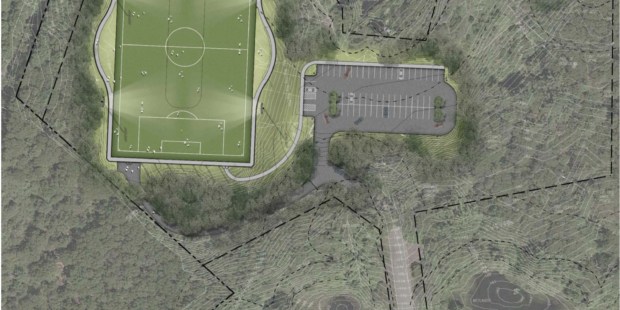
The following was submitted by Wayland resident Dave Bernstein, in response to this news article in Wayland Student Press Network: Wayland constructs new grass field.
I’m writing to address several errors in the “Wayland constructs new grass field” article posted in the 2023-12-18 edition of Wayland eNews, and to provide a more comprehensive analysis of the tradeoffs between artificial turf fields and natural grass fields.
At Wayland’s Annual Town Meeting in May 2021, Article 25 – Loker Artificial Turf Field Construction – failed by a vote 340 in favor to 383 opposed. For this Article to pass, a two-thirds majority of 482 votes in favor was required.
At Wayland’s Special Town Meeting in October 2021, Article 1 – a Three year Moratorium on Synthetic/Artificial Turf Fields – passed by 353 in favor to 77 opposed. At that same Special Town Meeting, Article 2 – Funding for design of a Grass Field at Loker – passed by a vote of 327 to 120, more than the required two-thirds majority.
These three outcomes are the result of five facts:
- An artificial turf field can be used for approximately 10 years, after which it must be disposed of. An average 80,000 square foot field contains 40,000 pounds of plastic carpeting and 400,000 pounds of rubber infill. This is a massive amount of pollution.
- As shown by statistics from the NFL Players Association, injury rates when playing on an artificial turf field are significantly higher than when playing on grass. Championship soccer matches for both men and women are played exclusively on grass.
- The surface temperature of an artificial turf field can rise 40F to 70 F above ambient temperature, causing blisters, burns, dehydration, and heat stroke. Continuing climate change will reduce the number of days during which artificial turf fields can be utilized.
- Laboratory analysis of the High School artificial turf field’s EPDM infill by its manufacturer shows the presence of two chemicals known to cause cancer and birth defects. There is no safe level of exposure to these chemicals.
- As shown in these pictures, the High School artificial turf field’s infill has been overflowing into the surrounding wetlands after significant rainstorms, threatening our water supply and our wildlife:
Wayland has 27 simultaneously usable grass fields. Only 10 of these are irrigated, and 4 of those 10 require significant repairs. Only a few of Wayland’s grass fields were constructed with appropriate drainage systems. The Department of Public Works lacks the resources – but not the desire – to properly maintain these fields. As a result, many of Wayland’s grass fields are in poor condition, risking injury to players. Relatively new fields with effective drainage and irrigation are performing well, but will eventually succumb to insufficient maintenance, as have their predecessors.
Wayland must develop a multi-year grass field rehabilitation plan – a sequence of steps that when completed over multiple years will have placed all of Wayland’s grass fields in optimal condition, with sufficient maintenance resources to keep them that way.
Combined with properly constructed new grass fields – like the one coming into service at Loker – Wayland’s athletic field needs can be met. Poisoning our environment and ourselves with artificial turf fields isn’t the answer.
Dave Bernstein











